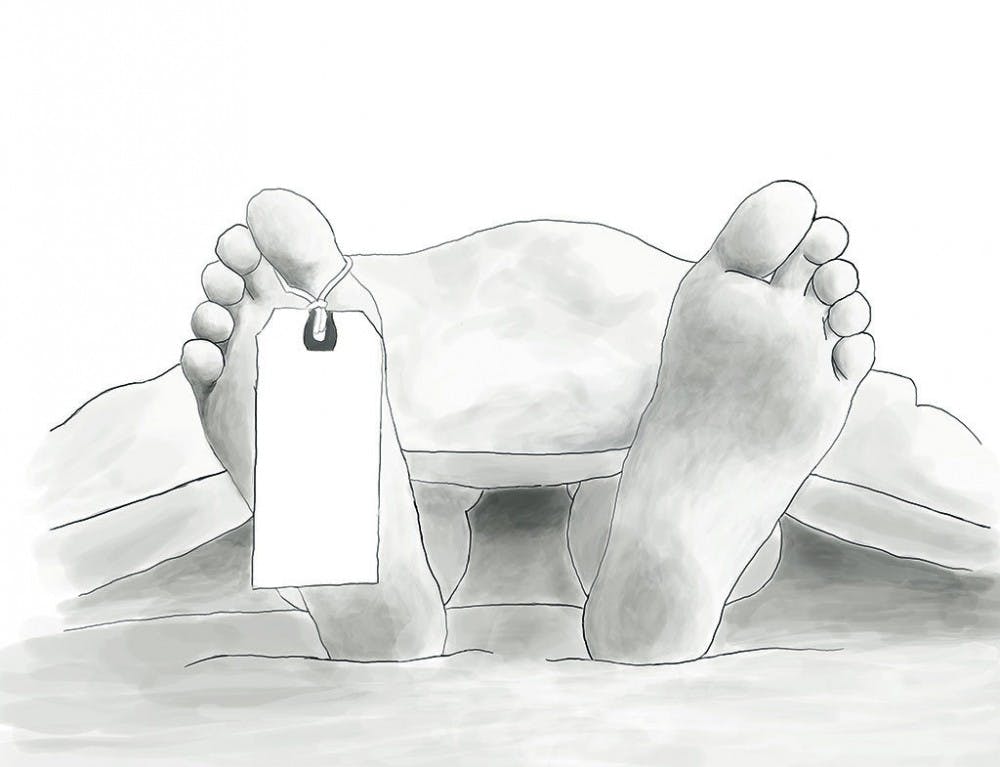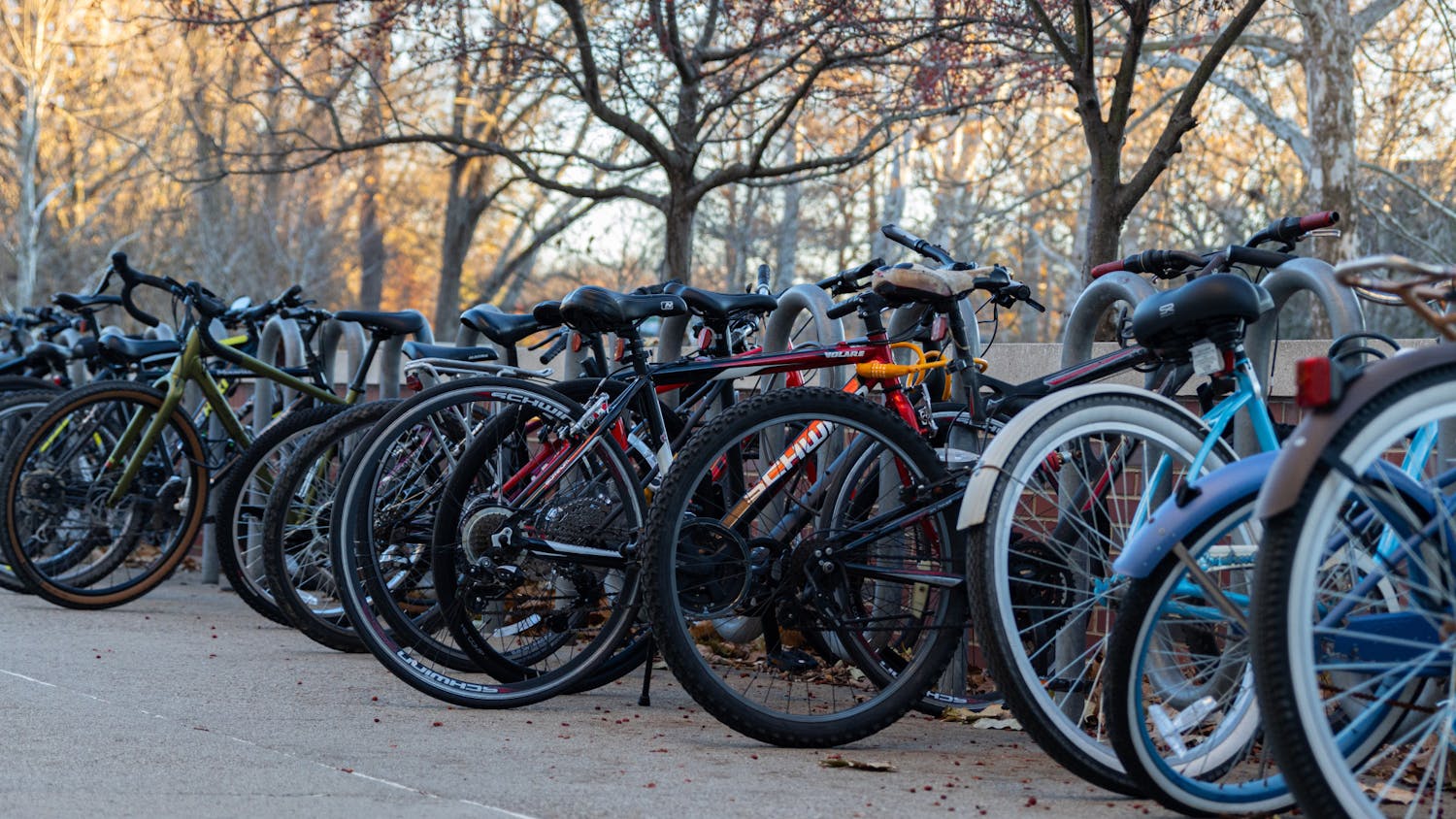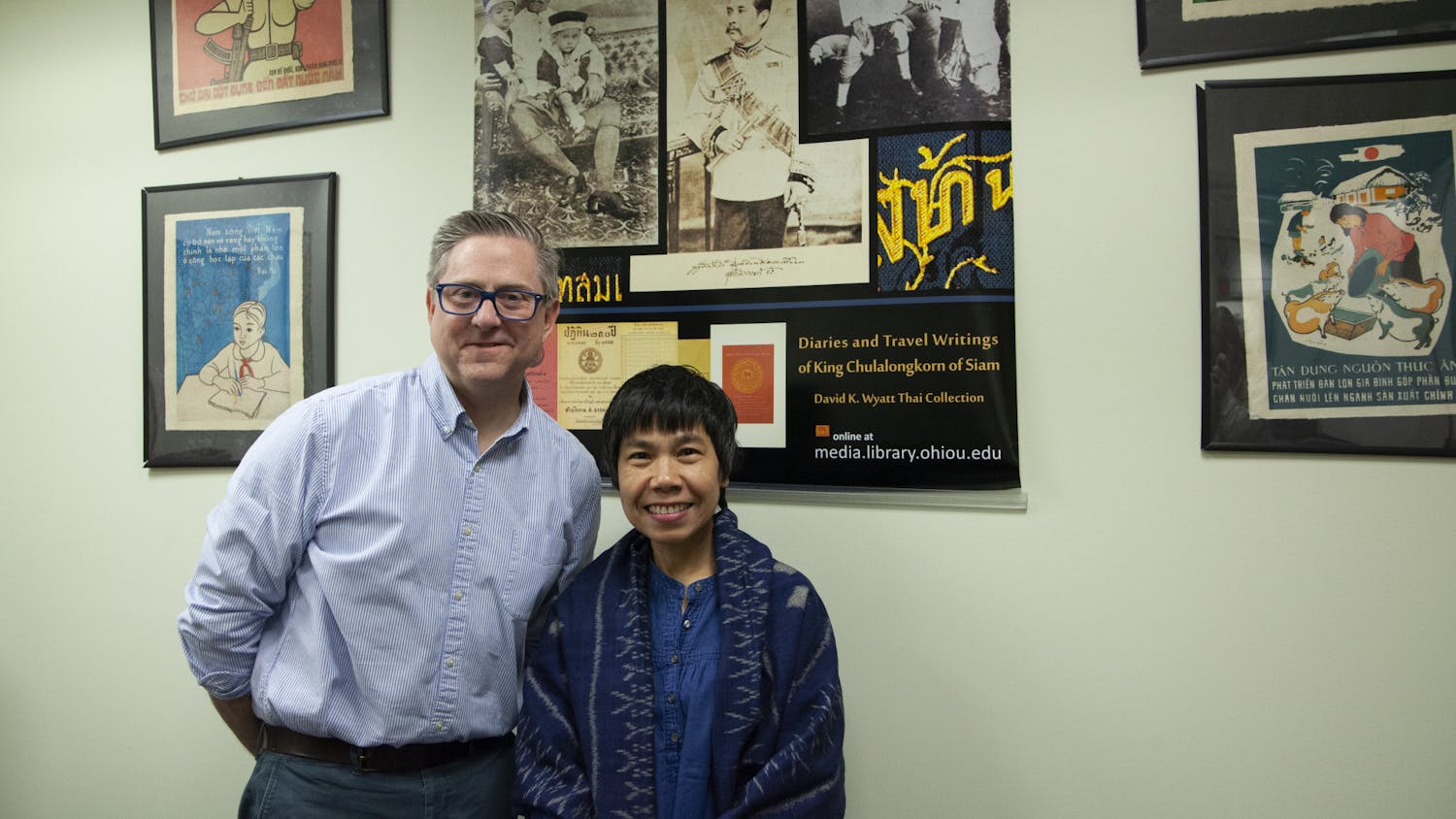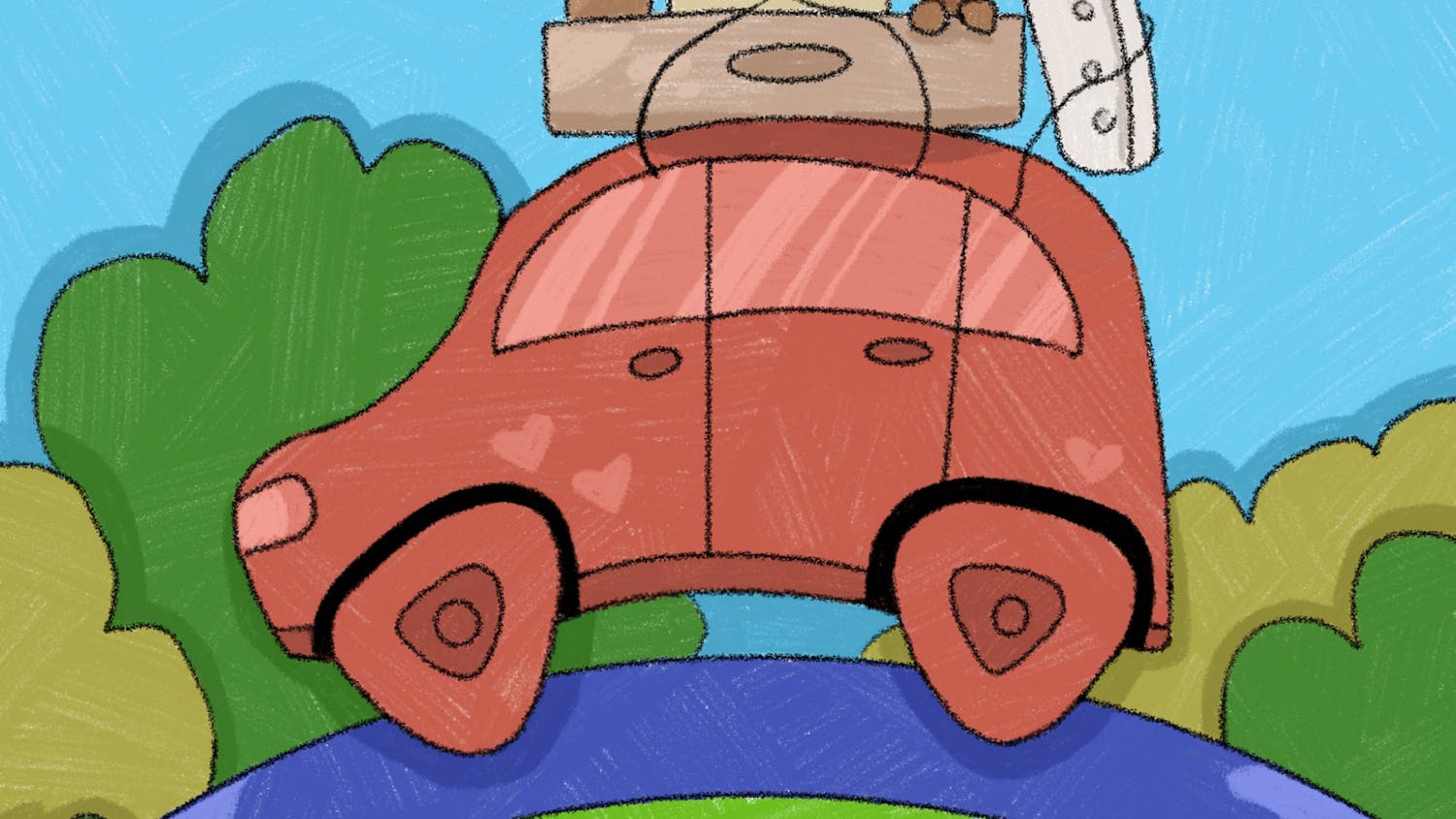Medical students get to experience and enhance their learning of the human body by working with donated cadavers during their four year training at Heritage College of Osteopathic Medicine
Ryan Yavorsky can't forget his first day of medical school.
Yavorsky walked into an Ohio University's Heritage College of Osteopathic Medicine anatomy lab and saw a dead body lying on his assigned lab station covered in a ghostly, white sheet.
Once uncovered, Yavorsky said the first thing he noticed was the cadaver’s hand, which had a coat of nail polish on its fingernails.
“Cadaver” is the medical term used for a deceased body that is intended to be used for dissection.
He said seeing the dead hand “struck” him, knowing that his first “patient” — a term OU medical students use to refer to the cadavers — may have just applied the nail polish not too long before it became a part of Yavorsky’s class.
“That freaked me out a bit,” Yavorsky, a first-year medical student in the OMS I program, said. “I just thought, ‘Wow. This was a real person.’ ... Seeing the things like nail polish or pierced ears and just little things like that put you on the edge.”
By practicing on actual corpses, Yavorsky said he felt thrilled and impassioned for the next four years because using those bodies gave him a sense of realism into his future profession.
“It’s then when you finally realize what you’re actually doing,” he said.
Yavorsky, along with 280 other graduate medical students, partake in an anatomy class, which is a part of the OU-HCOM graduate program, that requires them to practice on cadavers during their intensive medical training.
The program, among the university’s other anatomical curriculums, provides the foundation for medical students to enhance their education in understanding and advancing their practice in learning the structure of the human body, according to Lynn Waugh, manager of the OU Body Donor Program.
The process of donating
The current process of donating one's body varies dramatically from the older laws.
Criminals or dead bodies from graves were often stolen and used for dissection, a process known as “body snatching,” according to a PBS History Detectives website.
In terms of federally regulating organ and body donation, the United States abides by the Anatomical Gift Act of 2006 that states people can donate their organs for transplants or their whole body as an “anatomical gift” — meaning they are willingly donated — for an educational purpose. One cannot be registered as both an organ donor and a body donor.
“You can teach four or five medical students and with that you’re putting four or five more doctors in the world by donating your body,” first-year medical graduate student William Wallace said.
According to an organ donor website, “total body donations” isn’t an option if one chooses to be an organ donor, as well. The site also states that there are no age limits to being a body donor, but if one is younger than 18, he or she must have legal consent from a parent.
At OU, the same national and state laws apply for people who are interested in donating their bodies to the university’s medical school.
When someone chooses to donate his or her body to OU, the person can request legal forms from the medical college at any given time. The college, Waugh said, will then send forms that will authorize a person’s written consent to donate his or her body.
OU-HCOM pays all of the expenses for transporting the body to the college from anywhere within the state of Ohio. After anatomic studies are completed, the body is often cremated and buried in an OU plot at a cemetery in Athens unless the family or donor requests otherwise, according to the OU Body Donor Program pamphlet.
Students who enter the program must sign a contract stating that they will not discuss personal matters of the deceased or any prior knowledge known of the individual.
Larry Witmer, an OU professor of anatomy at OU-HCOM, said the honor code that medical students sign is an extension of their confidentiality agreement.
“(The honor code is) part of the medical culture,” Witmer said. “Medicine is different and the stakes are very high. … It’s a reminder of the level of ethics and professionalism that often comes with the job.”
To respect the families, Waugh said it is required that students respect the code.
“It’s out of respect and drilled into the student’s head that speaking about the previous medical records or a (deceased) person’s medical history is a violation of their contract with the program,” Waugh said.
Jessica Suba, a first-year medical student in the OMS-I program, said donation is “a big decision” that students appreciate.
It’s estimated that about 20,000 whole bodies are donated annually to science, according to the Harvard Business School Working Knowledge forum.
But in Athens, it is estimated that about 90 to 115 people donate their body to the program each year, Waugh said.
Witmer said the cadavers are all basically “anonymous” to the students.
“Age, profession and cause of death are the only things provided,” Witmer said. “But it’s a whole lot of information that provides a glimpse as to something about them.”
The essential tool to education
Yavorsky and Suba, along with fellow first-year graduate student William Wallace, all agreed the cuts and incisions made on the body require a lot of force and effort when dissecting and operating.
“You learn how tough the body actually is, and a lot of what we do takes more force than you would guess,” Wallace, a first-year graduate student in OMS I, said.
Yavorsky added that seeing actual specimens seem to reinforce that connection between the inner self and recognition of real life.
“We get to see kind of real-life representations of not only the bones and stuff, but how the nerves are organized and blood vessels and like (how) everything functions,” Yavorsky said. “A lot of it is kind of counterintuitive to how you think it would be in the body, and I think it’s important to see it in real life.”
In the classroom, Witmer said cadavers’ backgrounds provide opportunities for students to investigate more.
“We’ve had body donors whose profession was in heating and air conditioning, and in some cases we actually found kinds of cancers that are often associated with people who work with asbestos,” he said.
Witmer said mesothelioma, a kind of cancer associated with asbestos, is often what they look for in the cadaver.
“Age, profession and cause of death are the only things provided (with cadavers). But it’s a whole lot of information that provides a glimpse as to something about them.” Larry Witmer, an OU professor of anatomy at OU-HCOM said.
During a recent lecture discussing the thoracic cavity — the study of the chest region — Yavorsky said he was able to see the real-life outcome of health risks in patients’ lives that he learned about in class.
“I saw someone for the first time who had smoked, what their lungs look like — it was terrifying,” Yavorsky said.
Matthew Friend, a first-year graduate student in the OMS I program, said he enjoys studying different cadavers and exploring the questions related to his academic work.
“It’s cool to spread around the lab and talk and speculate about why that was or how that (disease) might have contributed to their lives and how they might have lived with it,” Friend said.
Paying it forward
Witmer said donating one’s body to science does more than just support medical students’ training. It also provides a profound connection between students and cadavers.
“There’s actually a connection that students will often make to that body donor and view them as their first patient,” Witmer said.
Some students in the program have a simple answer as to why they believe it’s important to donate bodies.
“We need them,” Yavorsky said. “They’re incredibly important and a big part of our learning.”
Many of the body donors are educators in the health profession and are always willing to give back to the program, Witmer said.
Every fall, the college has an annual memorial service during which it invites the students and faculty to join family members in honoring the importance of their loved ones being a part of the program, Witmer said.
Wallace said he would be willing to donate his body to science.
“While I’m young, I’ll stay a regular organ donor, but once I’m old and my organs aren’t very useful anymore I think I will switch over to being a body donor,” Wallace said.
He said there is a benefit and an importance for leaving bodies for students like himself to study.
“You can teach four or five medical students, and with that you’re putting four or five more doctors in the world by donating your body,” Wallace said.
@its_candicew
cw873012@ohio.edu






